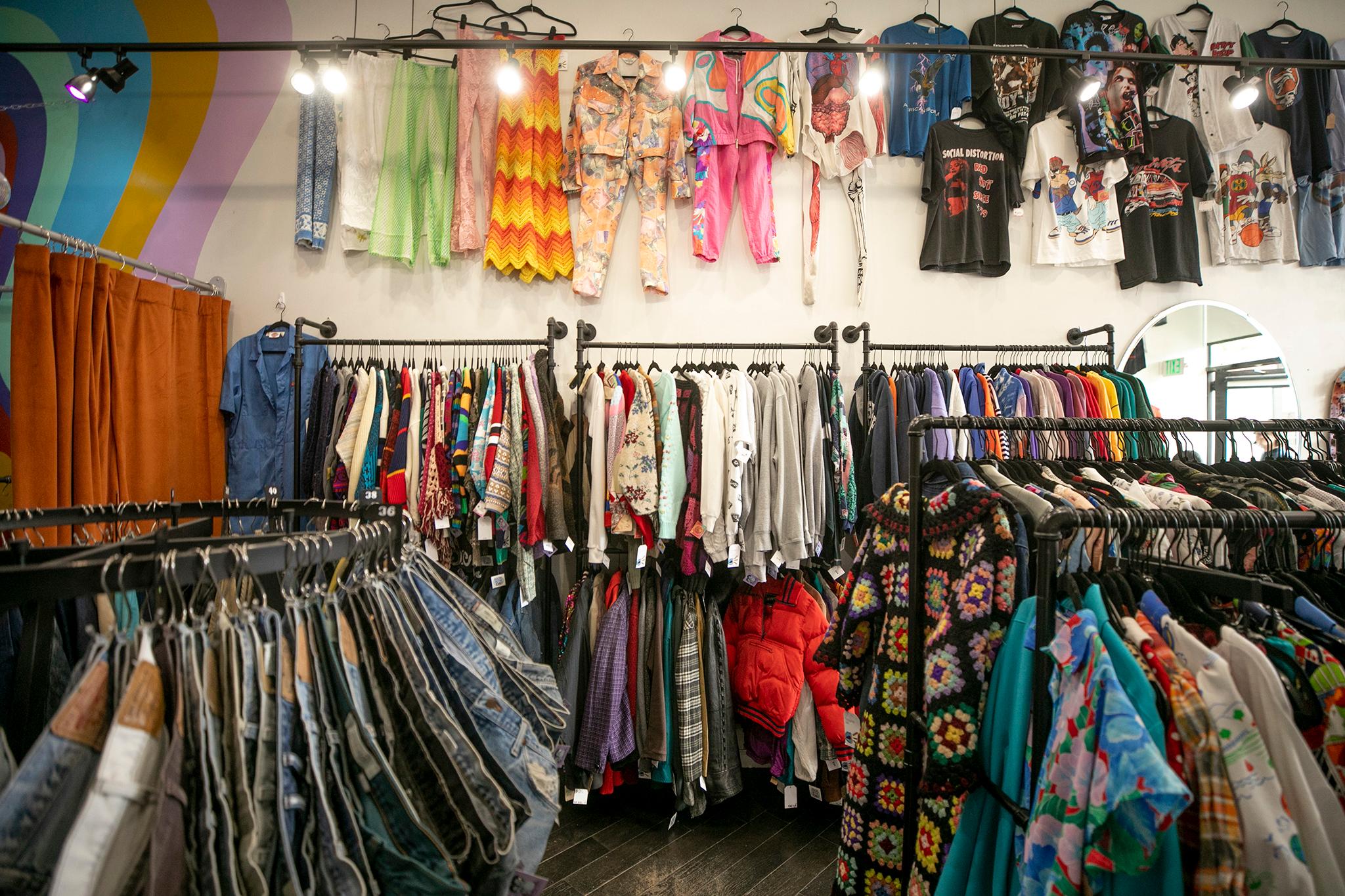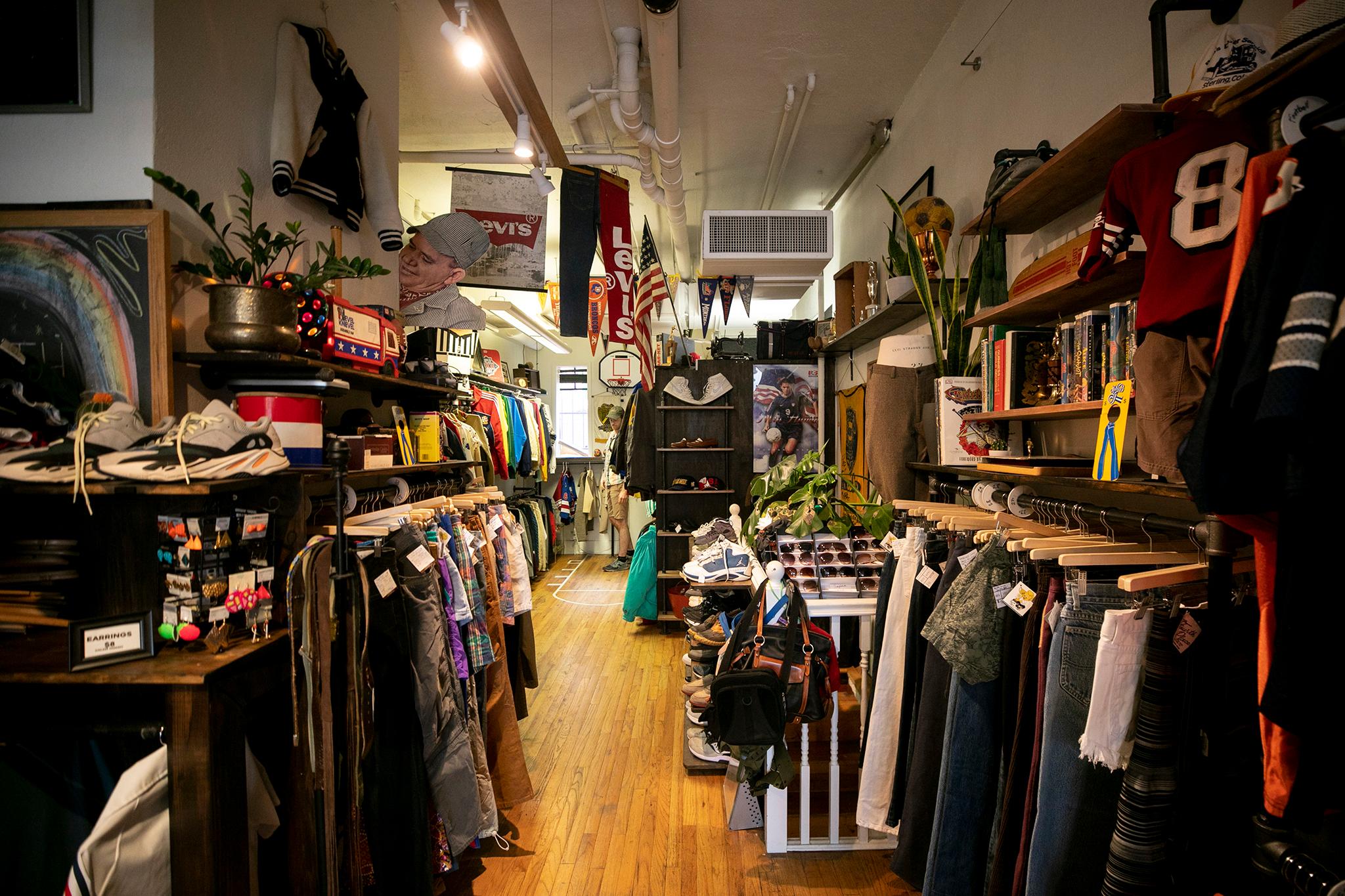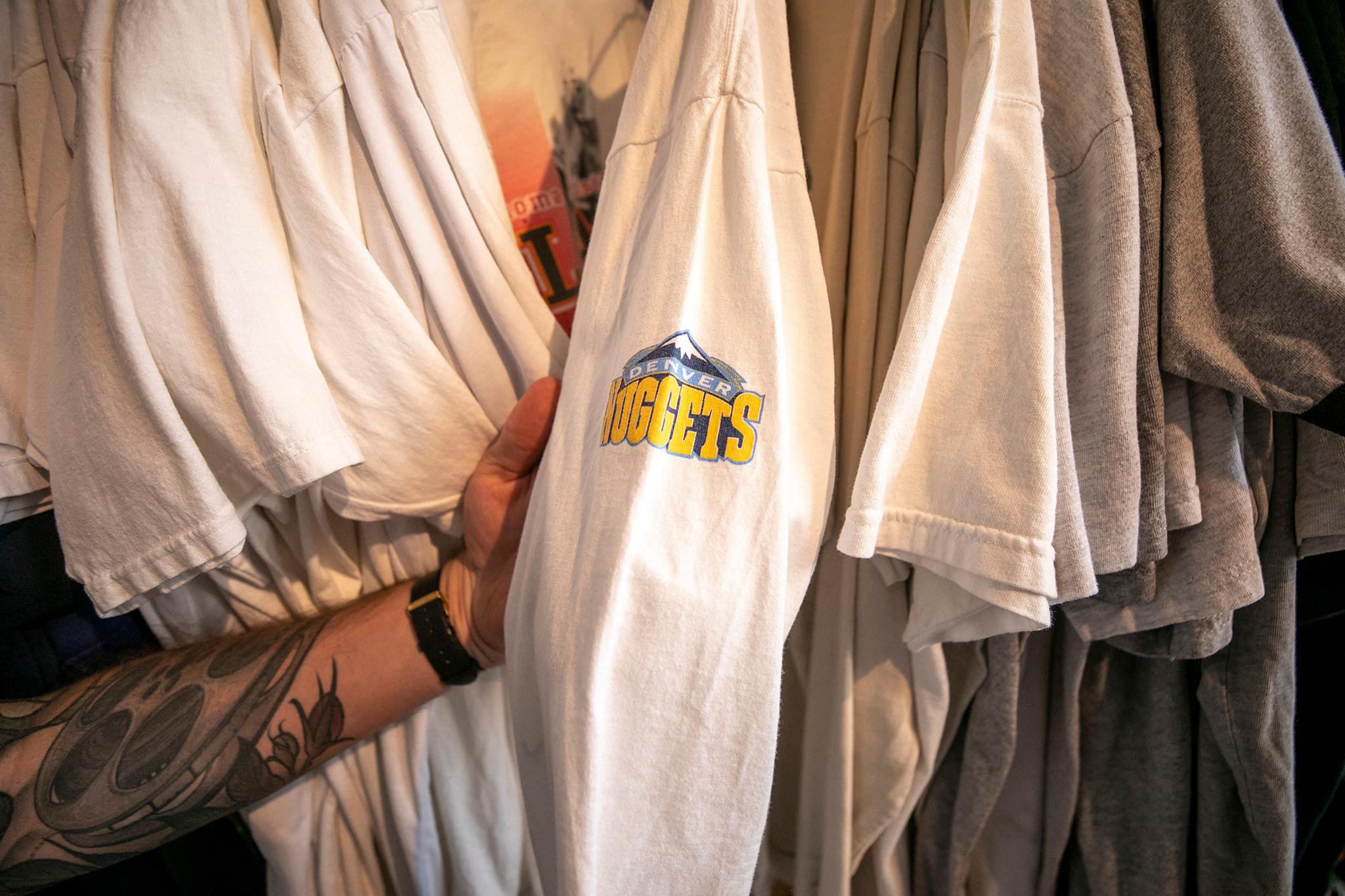Inside of Fourth Place Vintage in Denver's Cap Hill neighborhood, Miah Richards camps behind a wooden counter that's surrounded by old vintage T-shirts held up by plastic white hangers. Richards gently pulls apart both ends of a shirt's neckline to demonstrate how to check its elasticity.
"The quicker it bounces back, the better the neckline," Richards said.
Local vintage shop owners like Richards have witnessed a boom in interest for Denver Nuggets merchandise as a result of the team's first NBA Finals appearance in the franchise's 47-year history.
"I had a 2009 Western Conference Finals shirt that said "Beat LA" and it sold within 13 minutes of me putting it out in my store," Richards said. "We had 40 plus pieces of Nuggets stuff. This morning the first three people who came in were looking for Nuggets stuff. I had a guy in here yesterday, from Toronto, because he's been a fan of Jamal since he was at Orangeville [Prep]."
A similar wave of interest and demand occurred for shop owners when the Colorado Avalanche won the Stanley Cup last year.
"We were probably selling Avalanche gear for almost nothing because people weren't checking for it and now I can't keep Avalanche gear," Tristan Dego said, owner of The Common Collective in Cap Hill. "If anyone is pressed for a Nuggets T-shirt right now, it's locals."

Richards has been selling vintage clothing for over 17 years and opened Fourth Place Vintage three years ago as a result of his house overflowing with clothes. Over the years he's not only seen the ebb and flow of Nugget fandom but he's also witnessed the ebb and flow of the vintage market.
"No one in their right mind was thinking back in the 90s that something would be a $500 shirt in the next 25 years. You can't predict trends," Richards said. "One thing that's been proven is that nostalgia sells. What kind of nostalgia will people want in the future, that's different."

With NBA Finals gear flying off the shelves in recent weeks, what sort of future holds for the officially licensed or bootleg Nuggets shirts that are being sold across the city?
"You can't go wrong when it comes to anything sports," said Andy Velopulos. "History is a big part of why stuff really holds value. Jokic is going to be a fantastic story."
Velopulos, owner of Culture Street in the Virginia Village neighborhood, started in hype wear and sneakers before eventually adding in vintage 5 years ago. He's also seen his business experience a wave of Nuggets fans looking for vintage merchandise.
"[In] 10, 15, 20 years, Jokic stuff is going to be gold because it wasn't mass produced like it was with someone like Lebron," Richards said. "We have like this weird little niche following here so in the future those few pieces that we have held in Denver, when they do start trickling out to [places like] New York City, that's going to be one of the most sought after pieces."
Both Richards and Velopulos believe in the unique story that this year's Nuggets team presents, and for Richards, a big part of their story is the fact that their superstar duo are two international players in Jamal Murray and Nikola Jokic.
"The more unique something is, the more sought after it is going to be," Richards said. "It really feels like the stuff that is sought after are the things that are tied to an individual on that team. Once you have that recognizable figure on a team, that's really what drives the collectibility of something."
However, in order for merchandise to peak in value one thing must be true: Denver must win the series.
"Yes, 100%," Richards said when asked if the Nuggets needed to win the championship. "Otherwise it's just another season. How valuable is 2016 Warriors stuff?"

There is an important distinction to make between officially licensed shirts, bootlegs and fakes.
Merchandise that is officially licensed by the NBA and sold online or at select retailers, tends to do well over time.
"Say like a '96 bootleg Jordan Bulls tee, you can probably get 75 to 100 dollars now. Whereas if they were [an official] team shirt, it'd be like 150 to 250," Velopulos said.
Fakes are complete copies of officially licensed merchandise. These should not be confused with bootlegs which are instead artistic interpretations that do not attempt to pass off as real.
Richards said artists can use logos, imagery, color and likeness to make their own version of something. "Bootleg is an art form," he said.
In the late 80s and early 90s, Salem Sportswear began distributing bootleg T-shirts in parking lots that featured caricatures of iconic athletes before eventually selling to Fruit of the Loom in October 1993 for $136.4 million.
"You see bootlegs will hold a lot of value," Richards said. "They can be exponentially above market for licensed stuff or they can be piss poor cheap and no one cares. Once you get into bootleg, you're talking about the art and the artist that goes with it."

It's nearly impossible to predict the future value of Finals merchandise but certain shirts prove to be worth more than others in the vintage market today.
"Big graphics. The bigger the better," Velopulos said. "The fact that it has faces, even better."
Shirts with a print that wraps around, also known as all-over print or an AOP T-shirt, are really popular in the vintage market. In the 1980s, Los Angeles clothing brand Mosquitohead produced shirts like this which are now considered to be some of the most sought-after shirts in the vintage world.
"The more stuff on a shirt, the more valuable it usually is," Richards said. "If you're thinking about it from just an art perspective, you can have one piece of art, two pieces of art, or you have a whole giant piece of art."
Sizing also matters when thinking about the longevity of a shirt's value. Large and X-Large t-shirts are often more valuable because according to shop owners, there's a larger market for people across the spectrum who can fit into these sizes.
"Women can more than likely shop between a small and an extra large. Whereas most men are looking for larges and extra larges," Dego said.
Lastly, age will play a huge role in its value. Shop owners tread along the 15- to 20-year mark for what is considered vintage.
"Early 2000s Lakers merch would be like the new emergence of vintage," Richards said.
Velopulos does like carrying stuff as early as 10 years in his store, although his store is organized by racks that are tiered off based on how old or sought after certain items are.
"I like 10 years because clothes just don't last," Velopulos said.
None of the shop owners are looking to stockpile on current Finals merchandise that is being sold.
"There's no real point for me to try and hold on to stuff like this because as a business I need to sell stuff right away," Velopulos said.
"Everyone is selling on every corner in the city right now, you have to let it disperse itself down and let it dissipate to become a sought-after commodity again," Richards said.

Richards doesn't think Nuggets merch will go far, noting that it's fairly easy to find Bulls vintage in Chicago than it is here.
"Broncos stuff is worth more in New York City than it is here. There has to be scarcity and demand," Richards said. "I think the stuff that is going to be sought after in terms of stockpiling stuff is going to be like the artistic stuff that's about to come out of this. The bootlegs."













